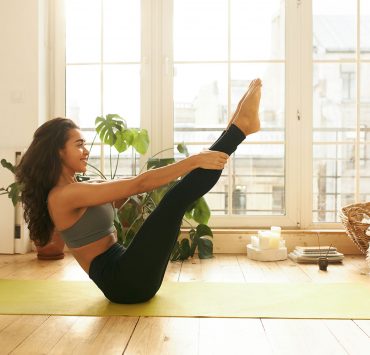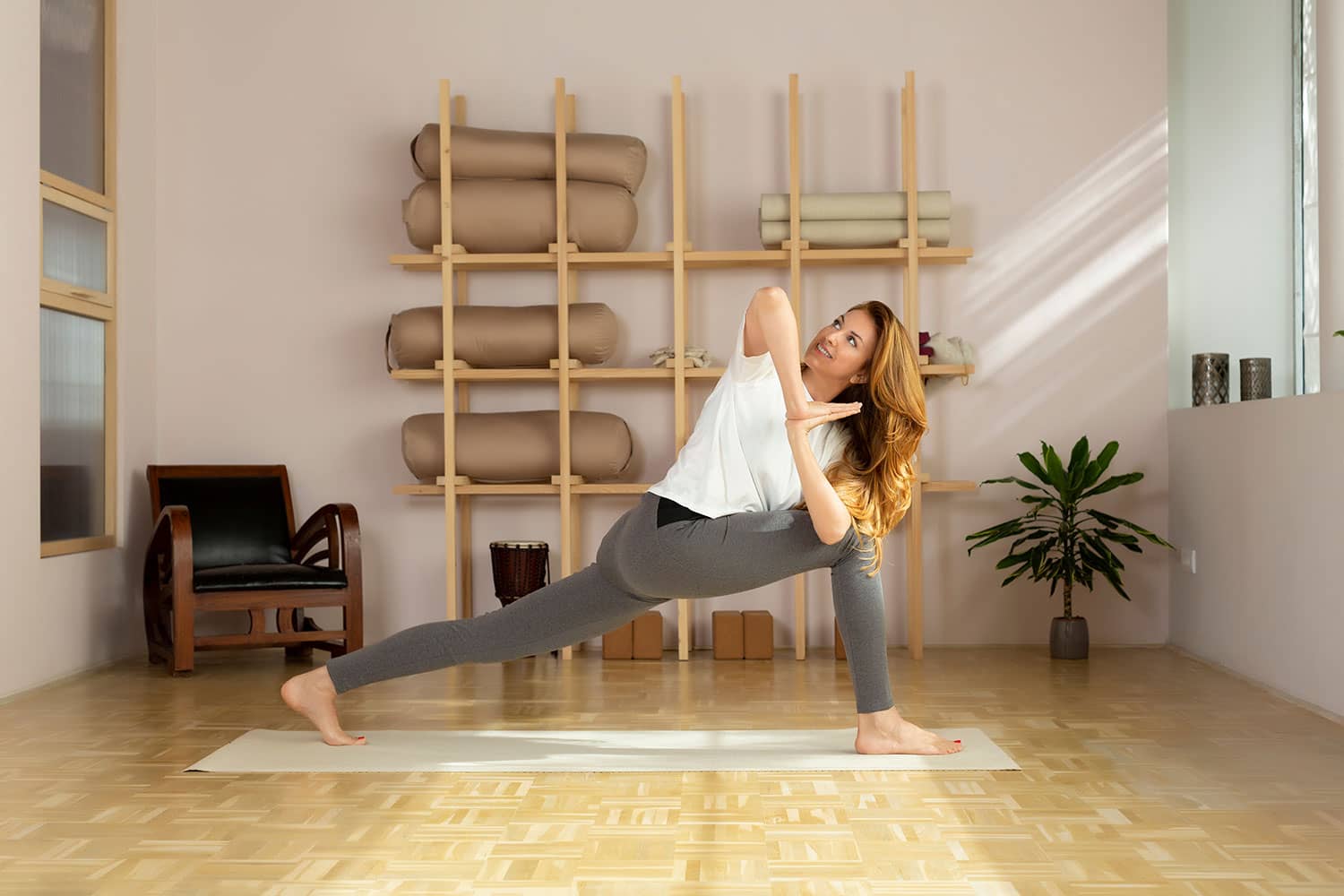
Meditation coach Emma Morrison is the go-to person for those…
Yoga is so much more than just exercise. And it’s not relaxing music and deep stretches. It is a lifestyle. It can actually do a lot for your health.
Yoga can decrease your risk of postpartum depression and reduce inflammation.
It can also help your gut.
The most common cause of constipation, gas, and tummy troubles is stress. They are side effects of an unhealthy, fast-paced lifestyle. This might include poor eating choices and hectic schedules. If this sounds like you, your digestive system might be suffering from hard stools. Or even infrequent bowel movements.
But yoga can help.
Yoga is one of the best natural ways to manage constipation. The compression and massaging of certain positions can stimulate blood flow. This helps overall with your digestive organs.
So if you are suffering from constipation, try including yoga in your daily practice.
You can also use a dietary modification like increasing fiber and water intake. But ultimately, yoga will give you the tools to manage stress and keep your body healthy.
So follow the guide below to find some relief once and for all.
How Yoga Helps Constipation
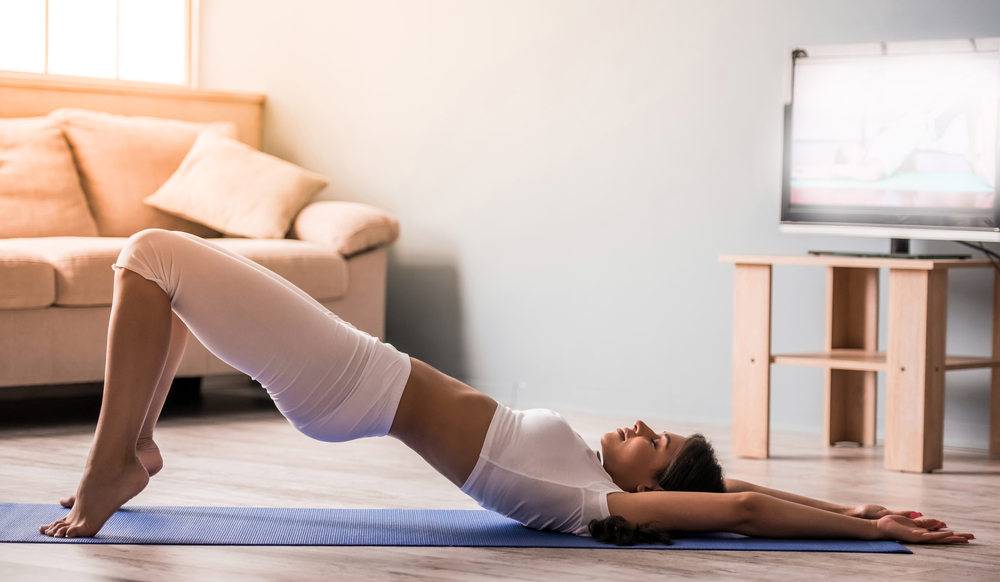
Yoga can help ease pain and discomfort in your digestive system. It alleviates constipation in two ways:
1) It manages stress
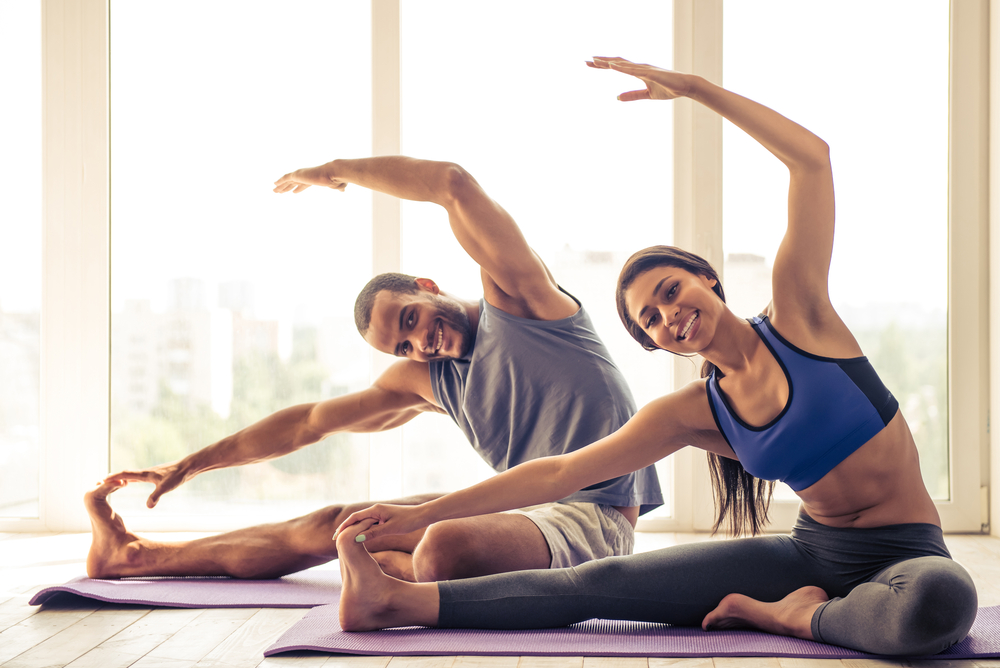
Yoga can help manage your stress response. And it can greatly improve the functioning of your digestive system.
You might notice that you’re more likely to get “blocked up” when you’re stressed. Even meditating or breathing deeply can help move things along.
Often times, our emotions get stuck in our stomach.
This can be uncomfortable and distressing. Try taking in a calm breath. Focus on what parts of your body need the most attention. Then try some yoga poses that will aid those parts of your body.
2) It gives your digestive system a massage
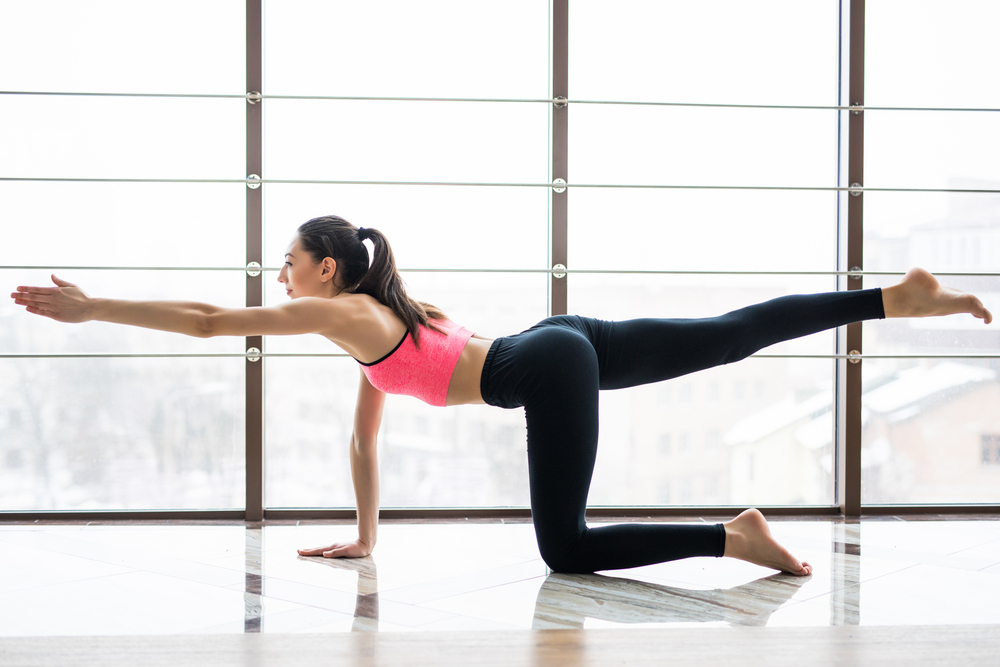
Twisting poses, inversions, and forward folds can also help your digestive system. These poses massage your digestive organs. They increase blood flow and oxygen delivery. They can also aid in the process of peristalsis. This encourages stools to move freely through the system.
Doing yoga regularly can result in regular, healthy bowel movements.
And don’t worry if you are bloated or have extra body fat around the belly. If these poses are uncomfortable, you can always modify them.
Remember that if you are in pain, do not do the pose. A little bit of discomfort is okay. But not pain.
If you struggle with twists, you can also try supine twists on your back or seated twists. There are always modifications to be found.
Below are some yoga poses that can help your digestive tract get back into a healthy flow.
#1 Matsyasana Twist — Half Spinal Twist Pose
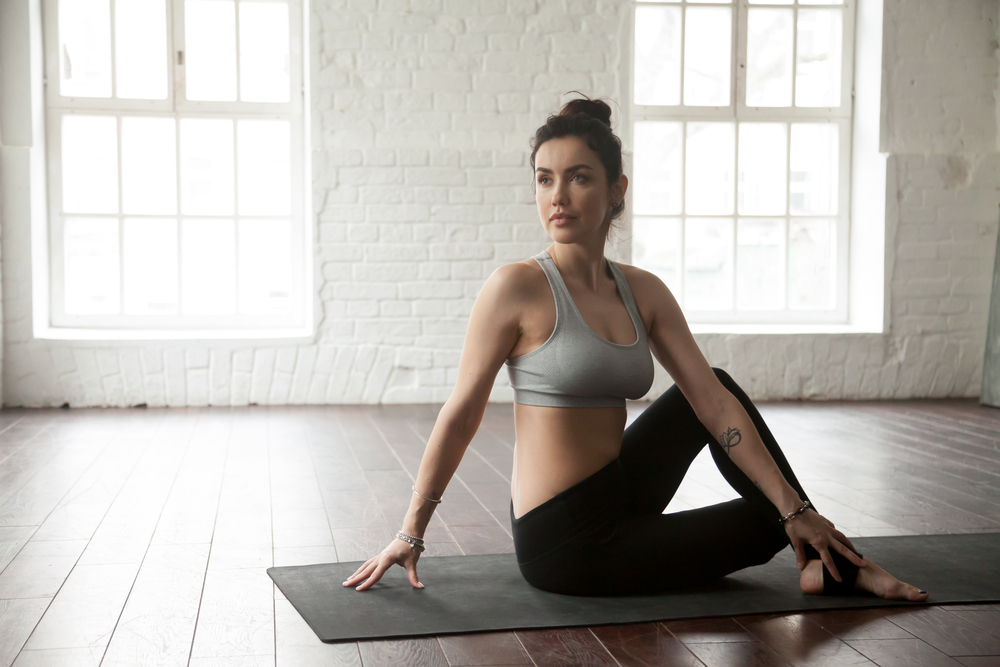
This is a great posture for your digestive tract. Try this twist while sitting on a yoga mat or other soft surface.
Half Spinal Twist will help to stimulate your digestive organs. It also aids in detoxification. So if you’re looking to expel toxins, this is another great posture to try.
Start by sitting with your legs straight out in front of your body. Bend your right leg and place your right foot on the ground. Make sure it is on the outside of your left leg. Ideally, it should be near your left knee. But if this uncomfortable for you, only take it as far as is comfortable.
Then, bend your left leg and place it under or close to your right buttocks. Place your left hand or elbow on or over your right knee. Gently twist to face over your right shoulder.
Hold this pose for a few breaths. Let your breath massage the sides of your torso. Focus on any areas of discomfort. Try breathing into them to relieve any tension.
Then switch sides. Make sure to hold it for the same amount of time on each side. This will keep your body balanced and aligned.
#2 Supta Matsyendrasana — Supine Spinal Twist Pose
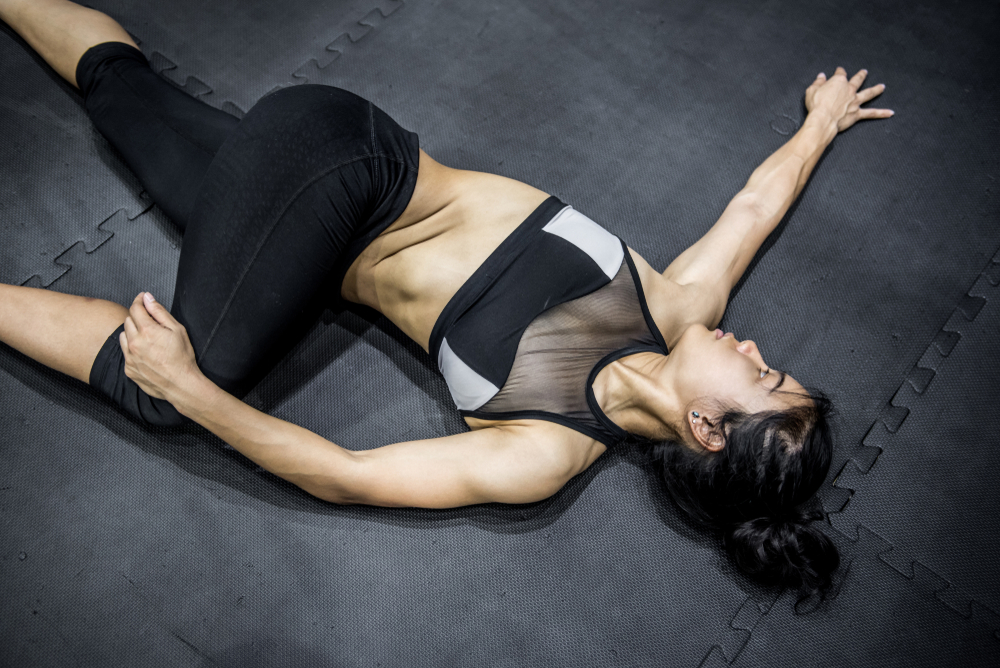
This pose also helps to alleviate constipation. It is a good modification if twists and inversions are too much for you. Supine Spinal Twist is a calming pose that expels waste. It moves food and increases blood flow to your gut.
Start by lying down flat on your back. Bring your arms out to the side in a T-position. Make sure your palms are facing down.
Bend one leg at the knee. Keep your shoulders flat against the ground. And gently let your bent leg drop over your other leg.
Hold this pose for a few breaths. On each inhale, feel your torso inflating. On each exhale, feel your body give into this posture a little deeper than before. Then switch sides. Again, make sure you hold each side the same amount of time. This way, both sides of your body will be even.
#3 Parivrtta Anjaneysana — Crescent Lunge Twist Pose
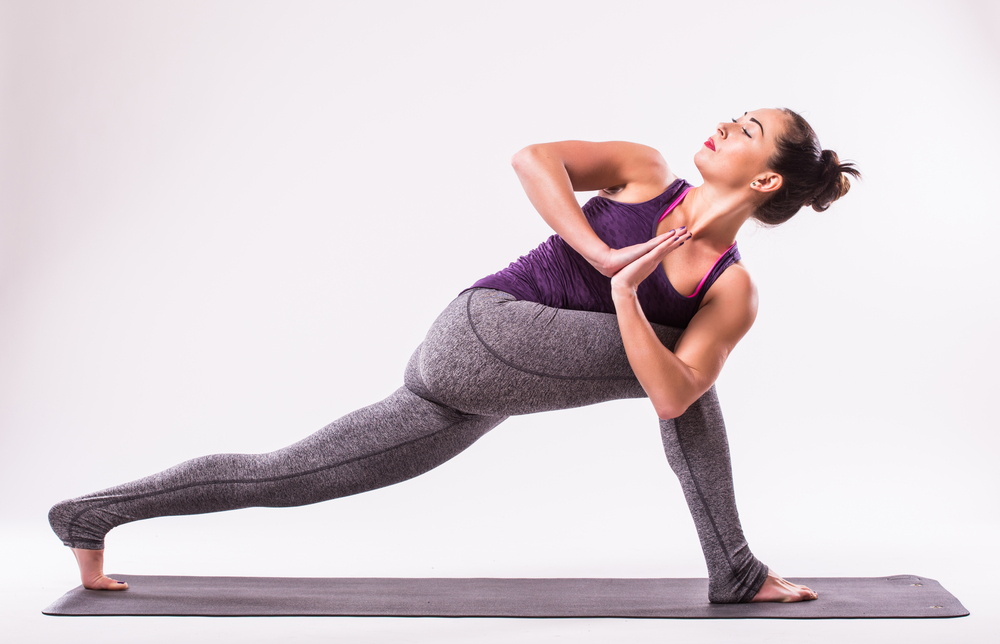
This is a standing pose that requires you to be in a lunge position. It does require some balance, so make sure that you are prepared for that factor within this pose. It also involves twisting your torso which helps to promote bowel movements.
Crescent Lunge Twist provides a more substantial twist than seated or supine twists.
As you do this pose, your forward foot should be directly over your knee. You should be up on the ball of your back foot. And your back leg should be straight
Start by lunging forward with your right leg bent and left leg straight. Place your hands into a prayer position. Slowly bend your upper body toward your right knee. Lead with your left shoulder as you do this.
Hold this pose for a few breaths. Then return to standing and start again with the opposite leg.
#4 Udrhva Mukha Svanasana — Cobra Pose
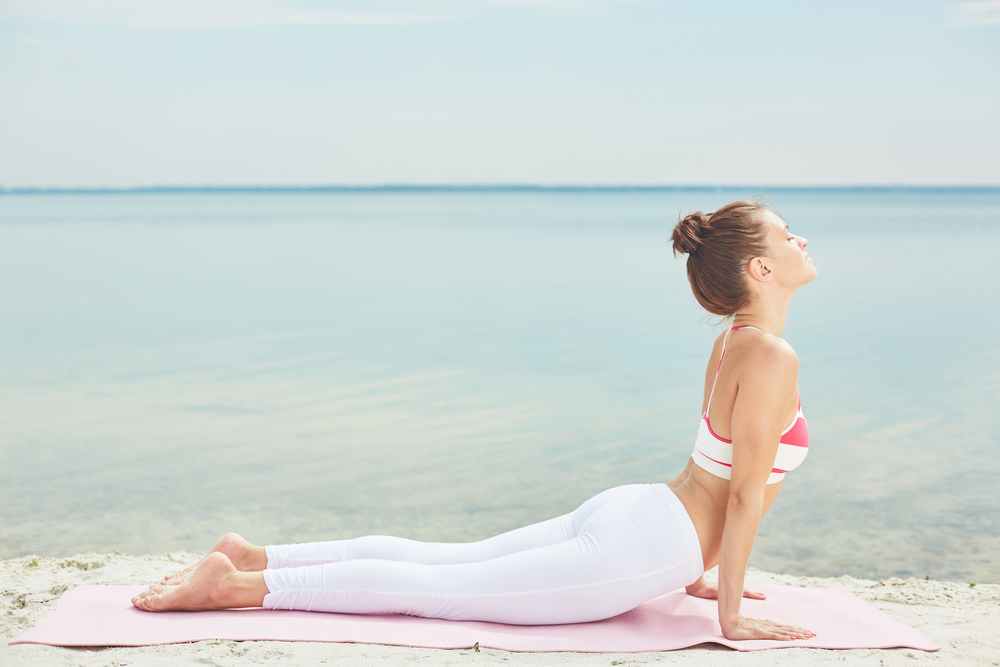
Cobra Pose does not require any twisting. So if twisting is no good for your body, this is a great pose for you. It could still help alleviate other symptoms such as gas so Cobra will certainly help you find relief.
To start, lie flat on your stomach with your toes pointed out. Place the palms of your hands on the floor at your sides next to your shoulders.
Engage your abdominal muscles and legs. Lift your head slightly. Gently curl your neck back. Press your palms into the floor. And gently lift your shoulders and upper body up off of the mat.
Hold this posture for several breaths. When you are ready, release and lower your body back down to the floor.
#5 Viparita Karani — Legs Up the Wall Pose
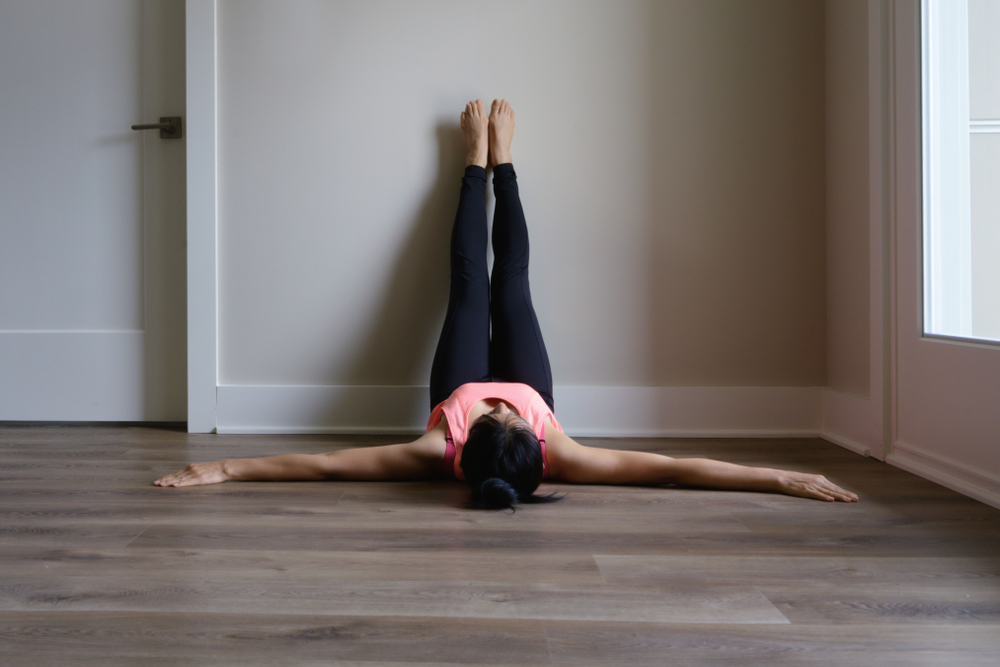
Legs Up the Wall is an inversion pose. This means that a part of your body will be upside down. But don’t let that scare you. You don’t need to hold yourself up. That’s why you’ll be next to a wall.
Sit on the floor close to a wall. Lower your back to the floor with your hips as close to the wall as possible. Walk your legs up against the wall. You can use a folded towel or blanket under your hips to relieve discomfort.
Let your head rest on your floor in a relaxed position. Place your arms wherever feels comfortable. Stay in this position for as long as it feels nice.
Gently release and then roll on to one side to get up.
#6 Pavanamuktasana — Wind-Relieving Pose
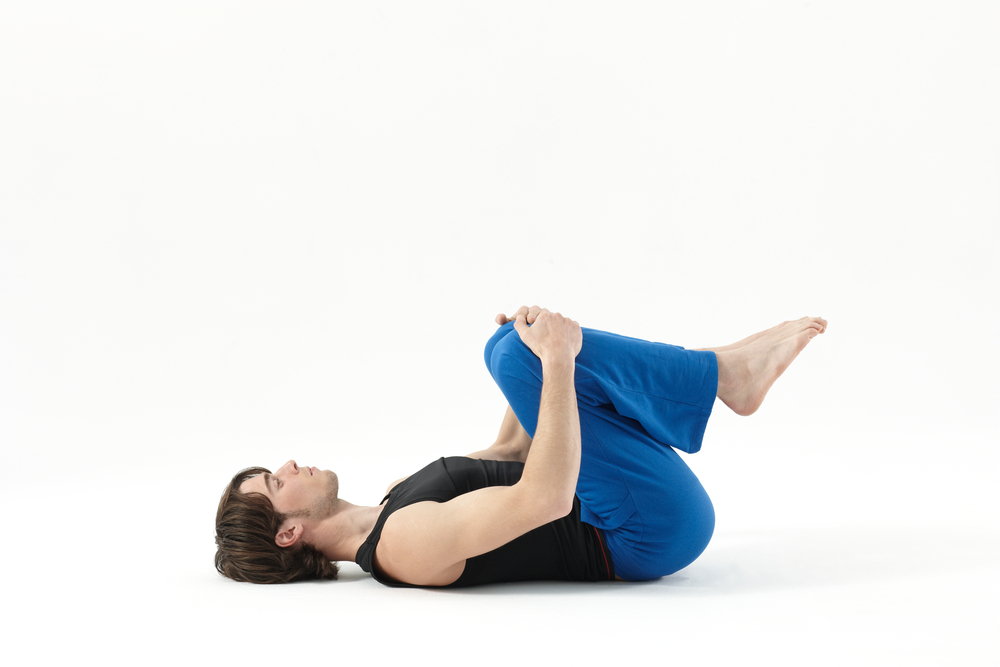
This is a great and easy pose for beginners. It is a non-twist pose and can help alleviate gas associated with constipation. After all, it is literally named after its effectiveness.
Lie on your back with your knees pulled up towards your chest. Place your hands on or around your shins. Tuck your chin in and gently press your back into the floor.
Gently pull your knees towards your chest. Hold this pose for a few breaths. And then release.
#7 Dhanurasana — The Bow Pose
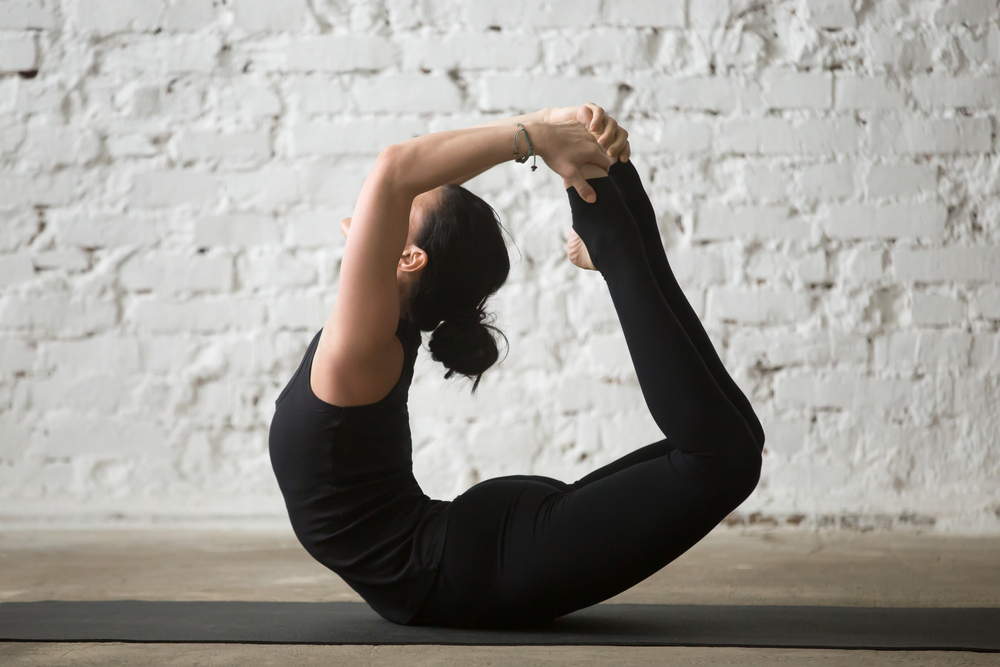
Bow Pose can strengthen all of your abdominal muscles. It is a great posture for those experiencing gas and digestive problems as it puts pressure on the abdomen.
This is one of the more advanced poses in yoga. So exercise this posture with caution when attempting it. Remember to listen to your body and do not push it too hard.
Start by lying flat on your stomach. Bend your knees. Then reach your arms back and clasp your ankles if possible. Gently raise your chest off the floor. Only go up as high as you are comfortable.
Using the tension between your arms and legs, try to lift your thighs and upper body off the floor.
Hold this posture for a few seconds. Then release.
#8 Vajrasana — Adamant Pose
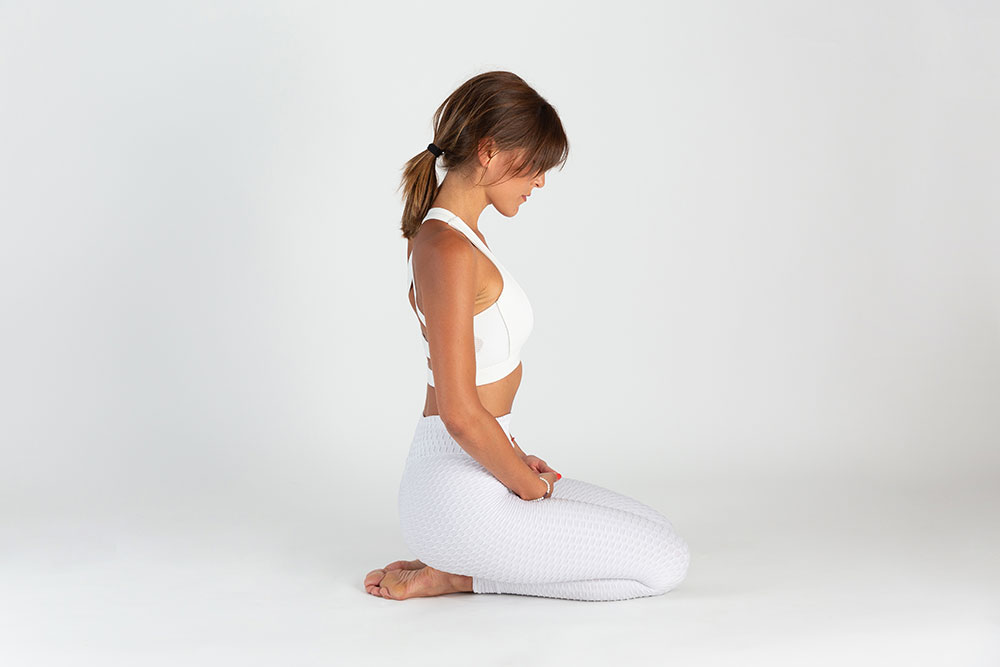
Adamant pose is also called the “Thunderbolt” or “Firmness” pose.
To begin, kneel on your yoga mat. Make sure your knees and toes are touching and your heels are apart. Sit in the gap between your heels.
Maintain a straight back and place your hands on your lap. Hold this pose for a few seconds to a few minutes. Listen to your body and feel what it needs from this pose.
#9 Balasana — Child’s Pose
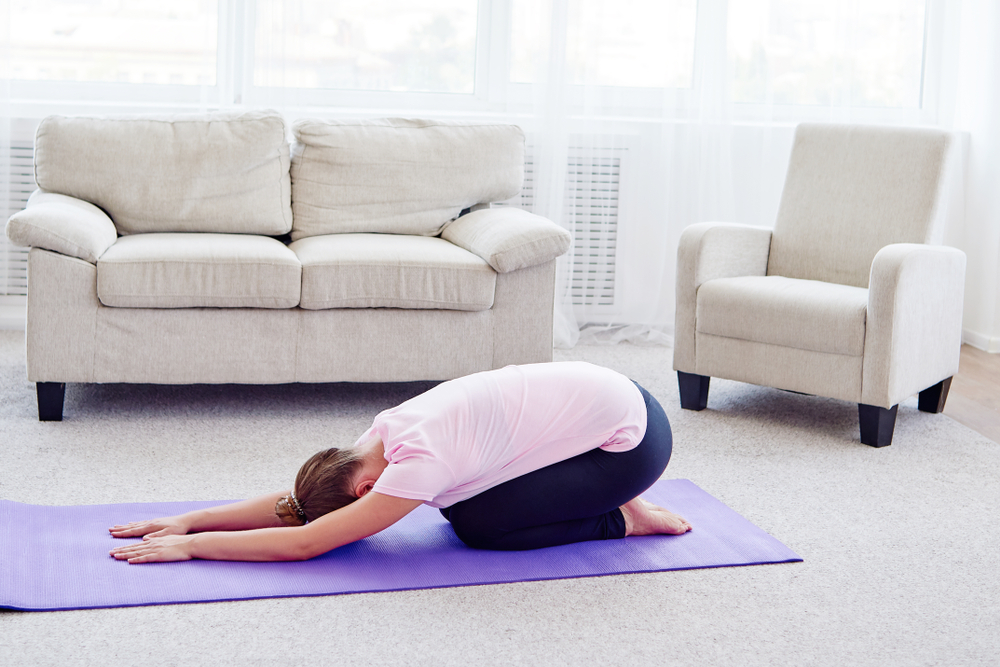
Child’s Pose is another effective non-twisting pose. Its effects are similar to downward facing dog. It contracts the organs and increases blood flow.
To start, sit on the floor with your knees spread apart. Make sure they are more than hip-distance. Tuck your feet under you with your big toes touching.
Lean forward and place your hands in front of you. Creep forward until your forehead is touching the mat. Hold here while you breath deeply. Feel your breath going all the way up and down your back. Direct your focus towards any areas of discomfort. And breathe into them to relieve any tension.
#10 Adho Mukha Svanasana — Downward Facing Dog
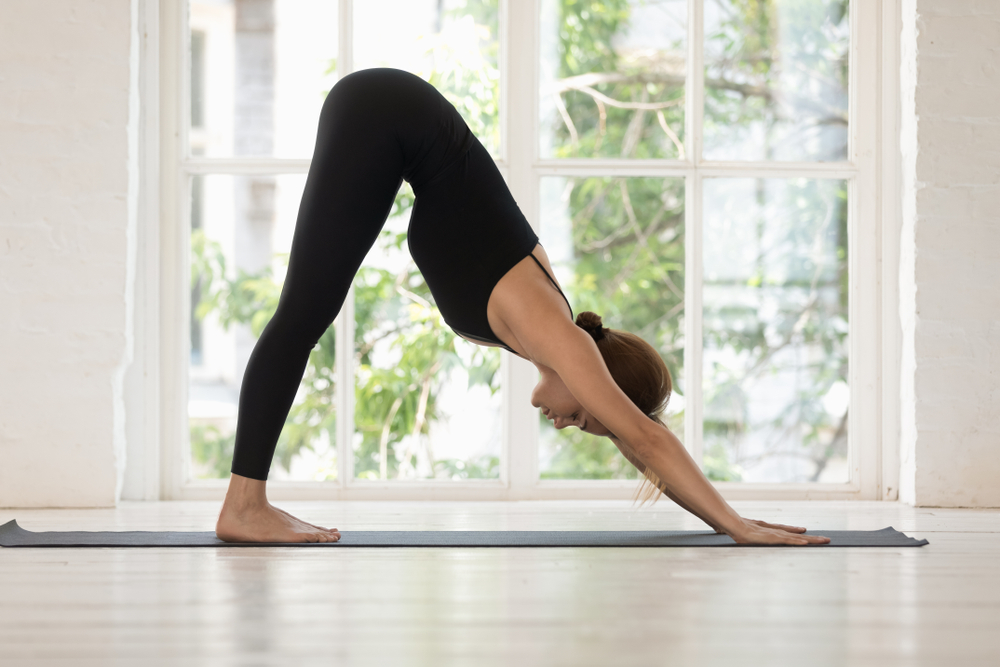
This basic pose helps to stimulate digestion. It compresses your gut, stimulates blood flow to your abdominal organs, and relaxes your GI tract.
Start on your hands and knees in a tabletop position. Make sure your knees are directly below your hips and your hands are directly below your shoulders. Your fingers should be pointing forward and your palms should be pressing down.
On an exhale, tuck your toes. Extend your legs and arms while pushing your pelvis in the air. You should be creating an A-shape with your body.
Keep your hands in place and continue to press the floor away from you. Look between your legs to make sure your neck is relaxed. Tuck your stomach towards your navel and drive your hips up towards the ceiling.
Final Thoughts
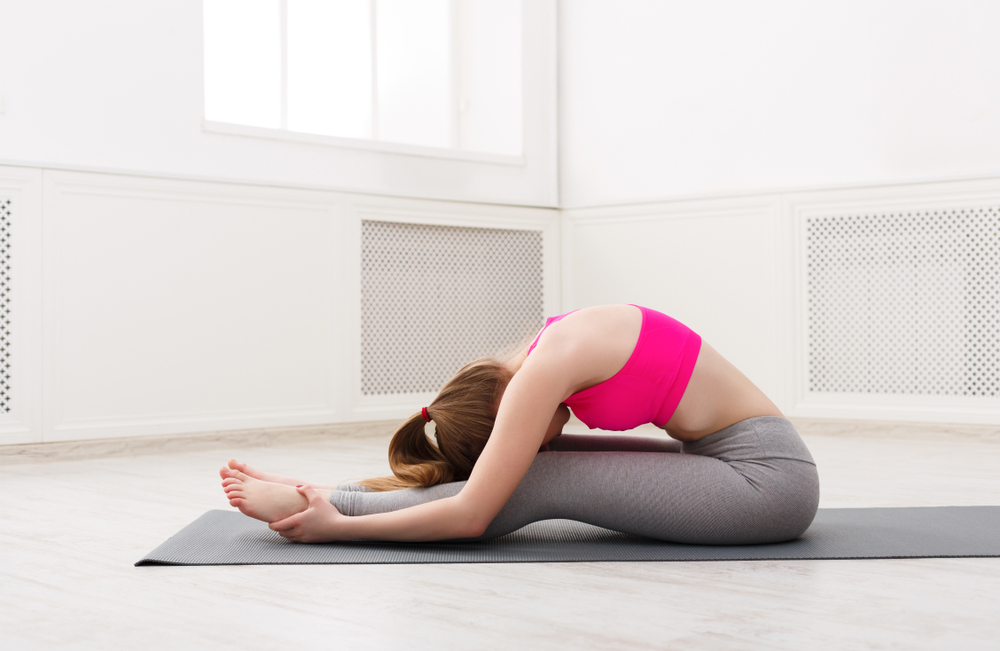
The above poses should help aid your digestive tract. But this is not an exhaustive list of poses altogether. If you are a beginner, be sure to try out the poses that you feel comfortable with first. Then work your way up to poses you would like to try and accomplish. Keep in mind that any twisting motion can increase peristalsis.
But above all, the most effective way to manage constipation is to manage stress.
Even doing Corpse Pose and allowing yourself to fully relax may aid your constipation.
No matter what pose you choose, don’t forget to calm your thoughts.
Breathe deeply. Find a self-care routine where you can check in with your body.
Nowadays, we are so busy with loaded schedules and commitments. But sometimes, our bodies cannot keep up with that lifestyle. Make sure you listen to your body. Hear its needs and address them. You are allowed to give yourself a break. You are allowed to love yourself.
A peaceful mind can go a long way when fixing any digestive issues.
Our emotions often get tangled up in our stomachs. This is why deep breathing and yoga can help to ease the tension of constipation.
By focusing on any areas of discomfort and breathing into them, you are listening. You are listening to what this part of your body needs. You are experiencing pain as a message.
Your body is telling you to slow down.
Developing this ability to listen is integral to your yoga practice. It can also help you lead a happier life. Ultimately, constipation is a side effect of stress. Other health benefits certainly benefit. But sometimes, when we get so caught up in life, our body starts to run out of fuel.
But this is not necessarily a bad thing.
Our body is looking out for us. It is reminding us of our basic everyday needs. Instead of worrying about a work deadline, be more worried about how much water you drink.
Small shifts in thought like this will help you develop a healthier outlook on life.
What's Your Reaction?
Meditation coach Emma Morrison is the go-to person for those living in Salt Lake City, Utah, who need to release stress and tension or simply dive deeper into their meditation practice. In her writing, you’ll receive useful information on how to live a more fulfilling life.






